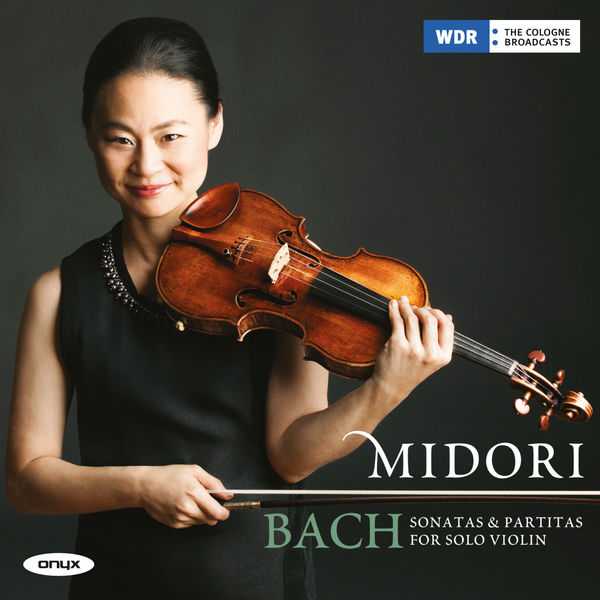

Composer: Johann Sebastian Bach
Performer: Midori
Number of Discs: 2
Format: FLAC (tracks)
Label: Onyx
Catalogue: ONYX4123
Release: 2015
Size: 1.4 GB
Recovery: +3%
Scan: yes
CD 01
Sonata for solo violin No. 1 in G minor, BWV1001
01. I. Adagio
02. II. Fuga – Allegro
03. III. Siciliana
04. IV. Presto
Partita for solo violin No. 1 in B minor, BWV1002
05. I. Allemanda
06. II. Double
07. III. Courante
08. IV. Double: Presto
09. V. Sarabande
10. VI. Double
11. VII. Tempo di Bourrée
12. VIII. Double
Sonata for solo violin No. 2 in A minor, BWV1003
13. I. Grave
14. II. Fuga
15. III. Andante
16. IV. Allegro
CD 02
Partita for solo violin No. 2 in D minor, BWV1004
01. I. Allemanda
02. II. Courante
03. III. Sarabanda
04. IV. Giga
05. V. Ciaconna
Sonata for solo violin No. 3 in C major, BWV1005
06. I. Adagio
07. II. Fuga
08. III. Largo
09. IV. Allegro assai
Partita for solo violin No. 3 in E major, BWV1006
10. I. Preludio
11. II. Loure
12. III. Gavotte en Rondeau
13. IV. Menuet I – V. Menuet II
14. VI. Bourrée
15. VII. Gigue
“The story goes that, when I was about two years old, my mother found me humming a Bach melody that she had been practicing a few days earlier. My own memories of Bach begin from the time when I started to practice my first solo Sonata in G minor, when I was about seven years old. The piece had been assigned to me, as all repertoire was at that age, and I had no idea what to do with it. Over the years, I have come to realize that, in studying Bach, one’s learning never stops. To my thinking – and I’m sure most other violinists would agree – these sonatas and partitas for solo violin are monuments of the literature, for many reasons. Their study opens up and trains the ear for more precise and ever-deeper listening. One learns to understand the relationship between the various notes, in addition to just hearing the notes themselves. Indeed, I find that I have learned more from studying these Bach compositions than from any other music. It is an almost miraculous feeling that envelops me when I am fully engaged with these musical masterworks.
These works are larger than life – they stretch the artistic and technical responses that one can have toward a piece of music. Bach’s music is always “right” for any circumstance. I have been able to present these pieces anywhere: to play for refugees in an outdoor setting, in the intensive care units at hospitals, in great concert halls, in places of worship, for celebratory occasions or remembrances and in any corner of any country in which I have ever performed. Bach travels well. The music does not require any special equipment or conditions. It must simply be played and heard, and invariably, with every committed performance, listeners young or old manage to be as transported as is any beguiled performer.” Taken from Midori’s booklet notes



